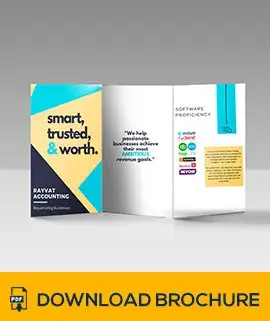How Does QuickBooks Accountant Work? Your Comprehensive Guide

Introduction
QuickBooks Accountant is a robust financial management software designed to simplify accounting processes for professionals. In this guide, we'll walk you through the key steps and features that make QuickBooks Accountant an indispensable tool for accountants and financial experts.
Step 1: User-Friendly Interface
Upon launching QuickBooks Accountant, users are greeted with an intuitive interface. The dashboard is thoughtfully organized, providing easy access to essential functions such as invoicing, expense tracking, and financial reporting.
Step 2: Company Setup
To begin utilizing QuickBooks Accountant, users need to set up their company profile. This involves entering basic information such as business name, industry, and fiscal year. The software's step-by-step wizard ensures a smooth setup process.
Step 3: Chart of Accounts
QuickBooks Accountant employs a customizable chart of accounts, allowing users to tailor their financial categories to suit their specific needs. This feature enhances flexibility and ensures accurate tracking of income and expenses.
Step 4: Bank Reconciliation
Effortlessly reconcile your bank statements with QuickBooks Accountant. The software seamlessly imports transactions, making it easy to match them with corresponding entries in your accounts. This crucial step ensures accuracy in financial records.
Step 5: Invoicing and Payments
Generate professional-looking invoices directly within QuickBooks Accountant. Customize invoices with your logo and branding elements. The software also simplifies payment tracking, providing a centralized platform to monitor outstanding payments and streamline the collection process.
Step 6: Expense Tracking
Effectively manage business expenses with QuickBooks Accountant's intuitive tracking system. Categorize expenses, attach receipts, and gain a comprehensive overview of your financial outflows. This feature facilitates budgeting and expense analysis.
Step 7: Financial Reporting
One of the highlights of QuickBooks Accountant is its robust reporting capabilities. Generate comprehensive financial reports, including profit and loss statements, balance sheets, and cash flow reports. These reports provide valuable insights for strategic decision-making.
Step 8: Collaboration and Accessibility
QuickBooks Accountant promotes collaboration by allowing multiple users to access the platform simultaneously. Whether you're working with a team or collaborating with clients, the software ensures seamless communication and data sharing.
Conclusion
In summary, QuickBooks Accountant simplifies complex accounting tasks with its user-friendly interface, customizable features, and powerful reporting capabilities. By following these step-by-step instructions, users can harness the full potential of QuickBooks Accountant to streamline their financial management processes.
By implementing these features, QuickBooks Accountant emerges as a comprehensive solution for accountants seeking efficiency, accuracy, and collaboration in their financial workflows.
Ready to streamline your finances and take control of your business? Contact us today. Our team of QuickBooks experts lets us handle your bookkeeping and accounting needs with precision and expertise. Don't wait; take the first step towards financial clarity and success—reach out to us now!

